Fishing kayaks require robust shells that can withstand open-water conditions, including impacts and harsh elements. Preferred materials like rotomolded polyethylen (RPE) and fiberglass offer superior strength, impact resistance, and durability against sun and salt water. Strategic material selection and targeted impact-absorbing zones ensure structural integrity during extreme events. Rigorous testing methods simulate real-world conditions, certifying the kayak's safety and durability. An impact-resistant shell protects kayakers, equipment, and reduces long-term maintenance costs. Choosing the right shell material—plastic, fiberglass, or composite—is crucial based on intended use, budget, and personal preferences, with reinforced areas ensuring optimal performance across water bodies.
Fishing kayaks are designed to endure rugged waters and demanding angling conditions. To meet these challenges, a durable, impact-resistant shell is essential. This article delves into the crucial components, materials, and design features that ensure kayaking safety on the open water. We explore testing methods, highlight the benefits for anglers, and offer a buyer’s guide to selecting the perfect impact-resistant fishing kayak shell. Understand the importance of shell construction and discover how it enhances your overall kayaking experience.
Understanding the Demands of Fishing Kayaks
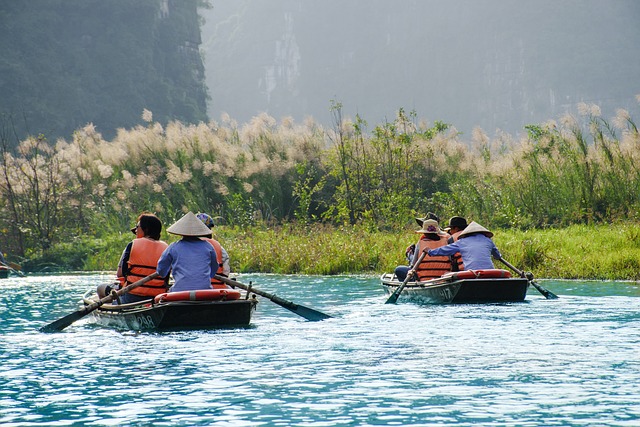
Fishing kayaks are designed for a unique and demanding purpose, which sets them apart from their recreational counterparts. These craft must withstand the rigors of open water, often in less-than-ideal weather conditions. Anglers expect their fishing kayak to provide stability, maneuverability, and durability, especially when navigating choppy waters or dealing with unexpected obstacles like rocks or submerged debris. The demands are clear: a robust construction that can handle impacts and abrasions without compromising the integrity of the vessel.
The shell is the first line of defense against these challenges, acting as a protective barrier for both the kayaker and their equipment. It must be built to resist not just surface scratches but also significant impact forces. A durable fishing kayak shell should incorporate advanced materials and construction techniques, ensuring it can withstand the test of time and the tough conditions often encountered during fishing excursions.
Key Materials in Construction: Durability and Resilience
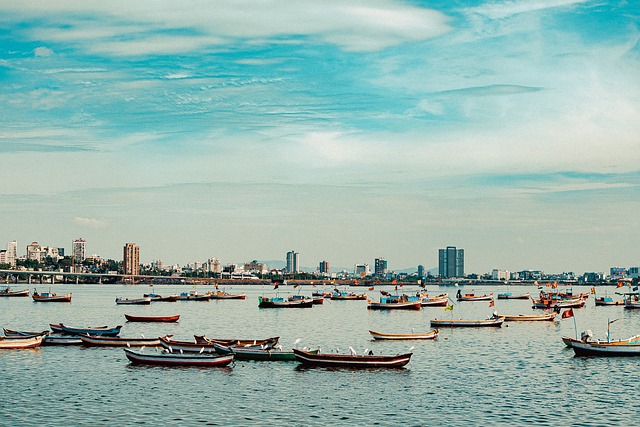
When it comes to crafting a high-quality fishing kayak, the materials used play a pivotal role in determining its durability and impact resistance. Key materials like rotomolded polyethylen (RPE) and fiberglass are favored for their exceptional strength-to-weight ratios and ability to withstand extreme conditions. RPE, known for its toughness and flexibility, can absorb significant impacts without cracking or breaking. Fiberglass, on the other hand, offers superior rigidness and protection against sharp objects, ensuring the kayak’s structural integrity.
These materials not only contribute to a fishing kayak’s overall resilience but also significantly extend its lifespan. They are designed to resist the wear and tear of frequent use, including exposure to sun, salt water, and rough handling during transport and storage. By choosing durable materials, kayakers can enjoy their vessels for years to come, exploring various bodies of water with confidence and knowing their investment is protected against the elements and potential impacts.
Design Elements for Optimal Impact Resistance

When designing a durable, impact-resistant shell for a fishing kayak, several key elements must be considered to ensure optimal performance in harsh conditions. One crucial design aspect is material selection; high-density polymers and reinforced composites offer superior impact resistance compared to traditional materials like plastic or foam. These advanced materials not only withstand the force of accidental impacts but also provide enhanced structural integrity during extreme weather events.
Additionally, strategic placement of impact-absorbing zones can significantly reduce the risk of damage. Designers often incorporate specialized cushioning or flexible panels in areas prone to strikes, such as the bow and stern. This targeted approach allows for a lighter overall structure while maintaining robust impact resistance. As a result, anglers can enjoy increased safety and peace of mind during their adventures on the water, knowing their fishing kayak is equipped to handle unexpected challenges.
Testing Methods to Ensure Safety Standards
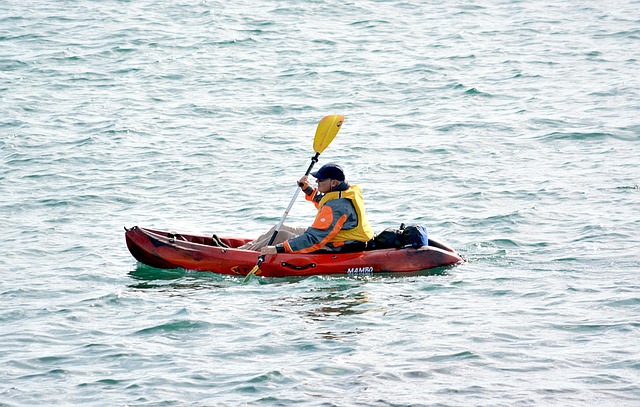
To ensure safety standards in a fishing kayak, rigorous testing methods are employed to simulate real-world conditions. These tests often involve dropping heavy objects onto the shell to mimic accidental impacts and extreme weather conditions such as high-pressure waves or strong winds. The kayak’s structure is evaluated for any signs of cracking, breaking, or deformation using advanced materials analysis techniques like X-ray imaging and tensile strength testing.
Additionally, impact resistance is assessed through drop tests from varying heights, replicating scenarios where a kayaker might fall or collide with other objects. These comprehensive testing protocols not only identify potential weak points but also certify the kayak’s durability, providing anglers with peace of mind while navigating rough waters or unpredictable weather conditions.
Benefits of an Impact-Resistant Shell for Anglers
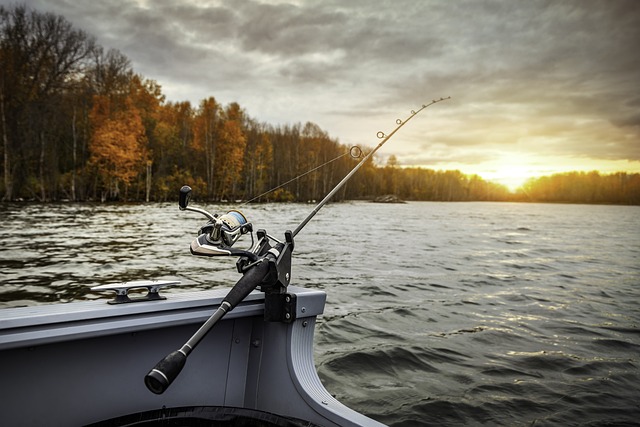
An impact-resistant shell offers numerous advantages for anglers who frequently venture onto bodies of water in their fishing kayaks. Firstly, it provides superior protection against accidental collisions with obstacles like rocks, logs, or other vessels, which is especially important during low-visibility conditions or when navigating unfamiliar waters. This durability ensures kayakers can focus on the art of fishing without worrying about potential damage to their craft.
Moreover, these shells enhance the overall safety of anglers by reducing the risk of injuries caused by sharp edges or fragments in case of a crash. With its robust construction, an impact-resistant shell can withstand the rigors of outdoor use, maintaining its structural integrity over time. This longevity translates into cost savings for anglers, as they won’t need to frequently replace damaged equipment, allowing them to spend more time enjoying their favorite pastime—fishing.
Choosing the Right Kayak Shell: A Buyer's Guide
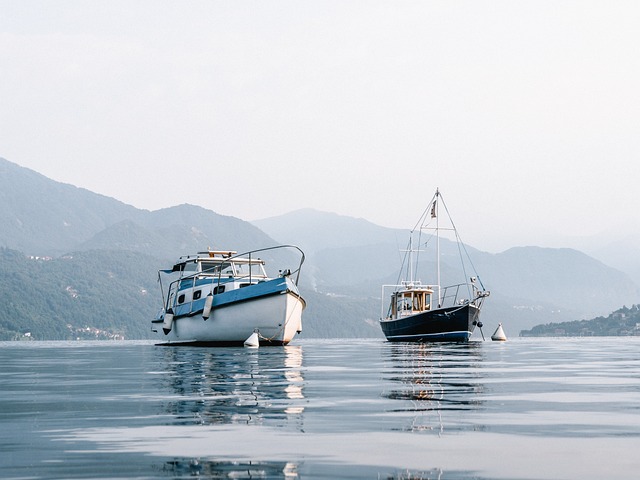
When shopping for a fishing kayak, selecting the right shell is paramount to ensure both performance and longevity on the water. There are several materials options available, each with its unique advantages and disadvantages. For instance, plastic shells are lightweight and cost-effective but may be more susceptible to cracks and dents compared to their fiberglass or composite counterparts. Fiberglass offers a balance between durability and weight, while composite materials combine various elements for superior strength and weather resistance.
Consider factors like intended use, budget, and personal preferences when making your choice. Fishing kayakers who prioritize speed and agility might opt for lighter shells, whereas those focused on stability and ruggedness may lean towards sturdier options. Additionally, examine the shell’s construction, looking for reinforced areas and seamless welds to guarantee impact resistance. Remember, a durable shell is key to enhancing your kayaking experience, ensuring you can navigate rivers, lakes, or coastal waters with confidence.
